Wave Optics Blog Posts
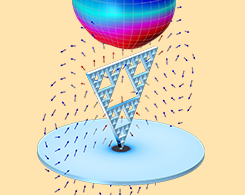
What Is the Curl Element (and Why Is It Used)?
When solving some electromagnetics problems, the curl element (also called the edge element or vector element) can be used in the finite element method.
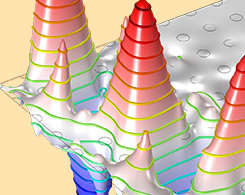
Engineering the Flow of Light Using Photonic Crystals
Did you know that the discovery of photonic crystals in 1980 came about because of an attempt to reduce the losses in semiconductor lasers in a specific frequency range?

Keynote Video: Improving Synchrotron Light Sources with Applications
For synchrotron light sources, brighter is better: RadiaSoft LLC creates and deploys wave optics simulation applications to design improved vacuum chambers for a synchrotron upgrade project.
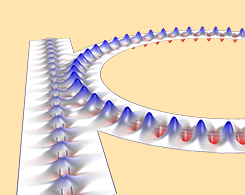
Calculating the Spectral Properties of an Optical Ring Resonator
The effect of a “whispering gallery” can be observed (a similar way) in another field of science entirely: light waves traveling in an optical ring resonator.

The Nonparaxial Gaussian Beam Formula for Simulating Wave Optics
Here’s your introduction to the nonparaxial gaussian beam formula, which is used for simulating wave optics problems in COMSOL Multiphysics®.
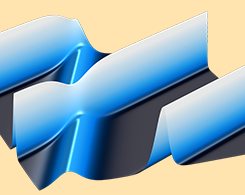
Chasing Waves: The Story of John Scott Russell and the KdV Equation
It all started with a horse: Learn about the history and use cases for solitons, as well as the life and work of the naval architect behind the KdV equation: John Scott Russell.

How to Model Linear and Nonlinear Optics in the COMSOL® Software
See how to model the Kerr effect, and other linear and nonlinear optical phenomena, using the Wave Optics Module and COMSOL Multiphysics®.
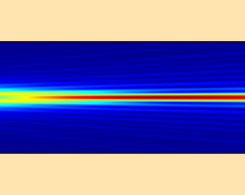
How to Use the Beam Envelope Method for Wave Optics Simulations
In order to simulate optically large optical systems, you need to solve for Maxwell’s equations, which requires a fine mesh and a lot of computational energy. Enter the beam envelope method.
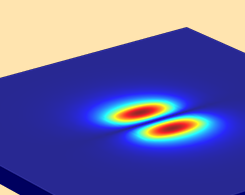
How to Model Optical Anisotropic Media with COMSOL Multiphysics®
Erasmus Bartholinus first observed the optical effect of birefringence in 1669. Today, you can observe this effect with a specialized modeling approach for optical anisotropic media.

Silicon Photonics: Designing and Prototyping Silicon Waveguides
John Tyndall tried to control the most visible form of energy, light, using 2 buckets and some water. Today, there is a more advanced device for this purpose: a silicon waveguide.
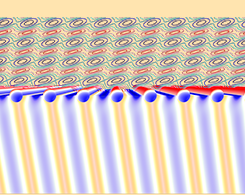
How to Model the Optical Properties of Rough Surfaces
We develop a computational model for calculating the optical properties of rough surfaces, such as incident light on a dielectric material with random variations in height and thickness.

Analyzing the Design of a New Generation of Midinfrared Fiber Optics
Semiconductor simulation software is a promising method for advancing the design of midinfrared fiber optics because it can be used to measure propagation losses in the optical fibers.

How to Implement the Fourier Transformation from Computed Solutions
In this wave optics demonstration, learn how to implement the Fourier transformation for computed solutions, using the example of an electromagnetic simulation of a Fresnel lens.
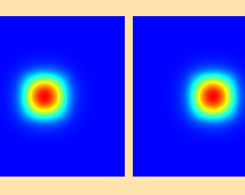
Improving the Design of Monolithically Integrated Magneto-Optic Routers
Magneto-optic (MO) routers are an efficient alternative to electro-optic (EO) routers for communication systems. Learn about a modeling approach used by researchers to improve MO router designs.
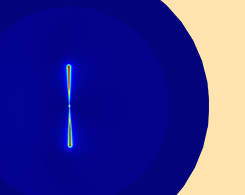
How to Couple a Full-Wave Simulation to a Ray-Tracing Simulation
Learn how to couple full-wave and ray-tracing simulations in a model with a nonhomogenous domain around the antenna. Part 4 of a series on multiscale modeling in high-frequency electromagnetics.
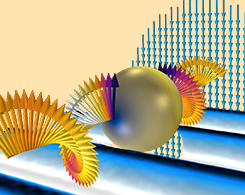
How to Couple Radiating and Receiving Antennas in Your Simulations
Learn how to couple radiating and receiving antennas in your simulations by using the scattered field formulation. Part 3 of a series on multiscale modeling in high-frequency electromagnetics.

2 Methods for Simulating Radiated Fields in COMSOL Multiphysics®
2 ways to model radiated fields: the Far-Field Domain node and the Electromagnetic Waves, Beam Envelopes interface. Part 2 of a series on multiscale modeling in high-frequency electromagnetics.
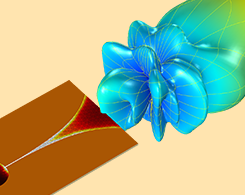
Introduction to Multiscale Modeling in High-Frequency Electromagnetics
Here’s an introduction to performing multiscale analyses of antennas and communication systems. Part 1 of a series on multiscale modeling in high-frequency electromagnetics.

Understanding the Paraxial Gaussian Beam Formula
The paraxial Gaussian beam formula can be used to describe the Gaussian beam. We go over the theory behind this mathematical formula, as well as its limitations.

Study the Design of a Polarizing Beam Splitter with an App
Creating a numerical modeling app offers you a more efficient approach to analyzing and optimizing the design of optical devices. See an example of a polarizing beam splitter design app here.
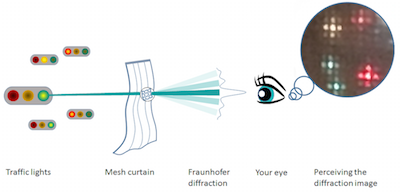
How to Implement the Fourier Transformation in COMSOL Multiphysics
See how to Fourier transform the electromagnetic field amplitude at the lens entrance in COMSOL Multiphysics® with a Fraunhofer diffraction example.

Comparing Two Interfaces for High-Frequency Modeling
When it comes to high-frequency electromagnetics modeling, which interface is better? We compare the Electromagnetic Waves, Frequency Domain and Electromagnetic Waves, Beam Envelopes interfaces.

How to Simulate a Holographic Page Data Storage System
As a follow-up to our blog post on modeling bit-by-bit holographic data storage, we demonstrate how to simulate a holographic page data storage system. Part 2 of 2.
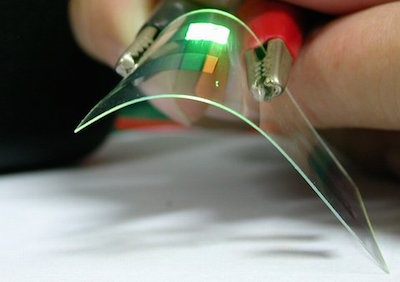
Simulation Paves the Way for More Efficient OLED Devices
To study light loss in organic light-emitting diodes (OLEDs), researchers from Konica Minolta Laboratory turned to COMSOL Multiphysics®. Get the full story.
